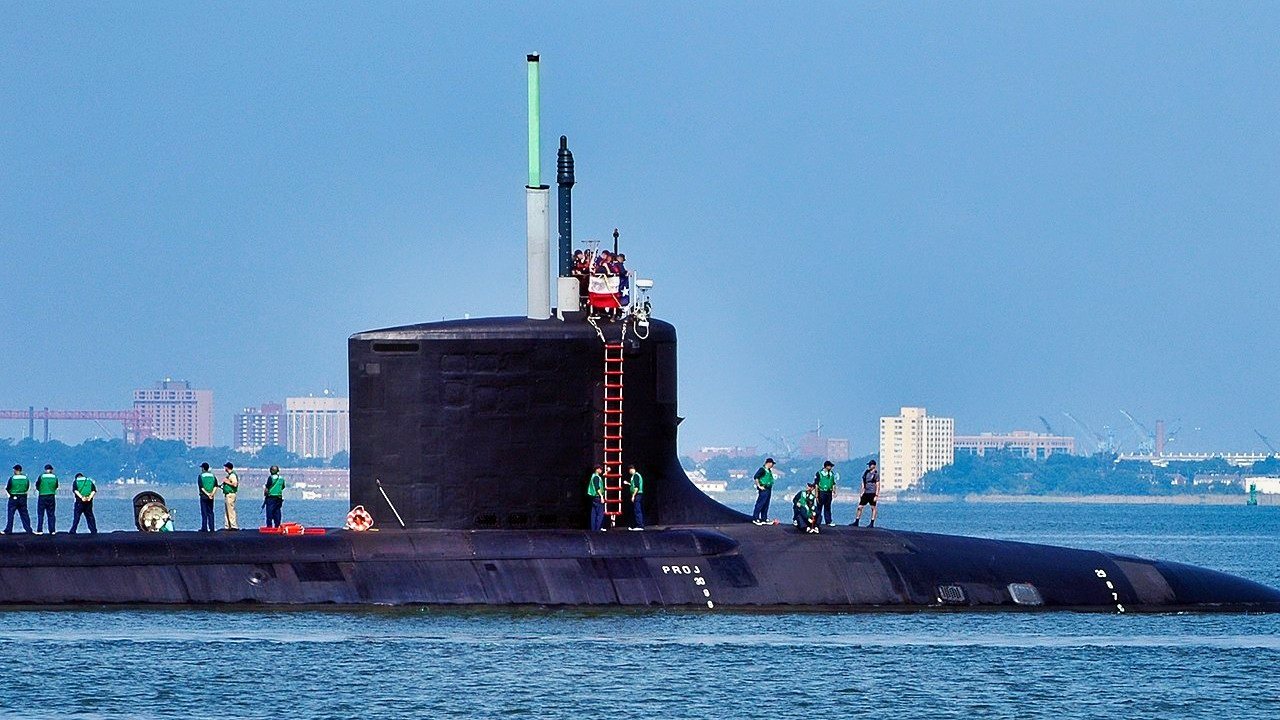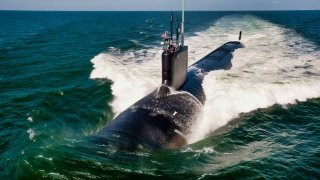Underwater Drone 'Aircraft Carriers'? The U.S. Navy Is Loading Submarines with UUVs
The U.S. Navy will deploy a groundbreaking torpedo-tube launch-and-recovery (TTL&R) uncrewed underwater vehicle (UUV) capability on a submarine for the first time by the end of this year.
Summary and Key Points: The U.S. Navy will deploy a groundbreaking torpedo-tube launch-and-recovery (TTL&R) uncrewed underwater vehicle (UUV) capability on a submarine for the first time by the end of this year.

-USS Delaware, a Virginia-class nuclear-powered attack submarine, will be the first to receive this new system. The Navy tested the REMUS 600 UUV last year, demonstrating its versatility with a mission endurance of nearly 70 hours and a range of 286 nautical miles.
-This new capability will significantly enhance the submarine’s role in subsea and seabed warfare operations, vital for protecting undersea infrastructure. As global tensions rise, this timely introduction will help maintain the U.S. Navy's strategic edge.
The Virginia-Class Submarines are Going All in on Drones
The U.S. Navy will be ready by the end of the year to deploy a torpedo-tube launch-and-recovery (TTL&R) uncrewed underwater vehicle capability on a submarine for the first time.
According to Naval News, the unprecedented TTL&R option will enhance the UUV’s overall function while underway. USS Delaware, a Virginia-class nuclear-powered attack submarine (SSN), will receive the new system as part of the service’s mission to operate more UUVs in the submarine force.
As explained by Vice Adm. Rob Gaucher, “The intent is we’ll start installing it in about a month, Delaware will deploy about six months later, and then – when the boat gets over to the European theater – we’re going to look for opportunities to do exercises.” Operational commanders in the region will then direct the boat. “They’ll base that on what the exercise opportunities are, or what challenges they have that we might be able to employ those vehicles against,” the admiral added. “There are a number of different things we can do with the vehicles, and we’ll certainly look for every opportunity.”
The REMUS 600 Was Tested Last Year
The Navy carried out tests of the UUV late last year, when the crew of USS Delaware conducted a launch and recovery of a REMUS medium UUV during an operation dubbed “Yellow Moray.” USS Indiana and USS Oregon also supported the test, alongside Submarine Forces Atlantic, Unmanned Undersea Vehicles Squadron One’s Flotilla One, and others. The REMUS 600 was developed by a subsidiary of Kongsberg Maritime and represents the most versatile component of the REMUS AUVs.
As explained by the Oceanographic Systems Lab, “It has a mission endurance of nearly 70 hours with speeds up to 5 knots at depths up to 600 meters. With its increased payload it has a range of 286 nautical miles.”
Why is the TTL&R Game-Changer
Equipped with this new capability, the Virginia-class submarine will be able to participate more heavily in subsea and seabed warfare operations. Over the last few decades, more and more nations have developed infrastructure networks under the shoreline. Civil society depends on the optical fiber, pipelines, and other cables that enable the flow of telecommunications undersea. USS Delaware, fitted with TTL&R for UUV capability, could be deployed to defend against or attack critical infrastructure.

The Virginia-class subs first entered service with the Navy in the early 2000s and remain vital components of the service’s core maritime strategic functions: forward presence, sea control, deterrence, maritime security, and power projection. The incoming TTL&R capability for its UUVs will only enhance the class’s prowess in the seas. As tensions continue to mount between Washington, Beijing and Moscow, the timely introduction of new sub capabilities is essential for U.S. boats to maintain an edge over their adversaries.
About the Author: Maya Carlin, Defense Expert
Maya Carlin, National Security Writer with The National Interest, is an analyst with the Center for Security Policy and a former Anna Sobol Levy Fellow at IDC Herzliya in Israel. She has by-lines in many publications, including The National Interest, Jerusalem Post, and Times of Israel. You can follow her on Twitter: @MayaCarlin.
All images are Creative Commons.


